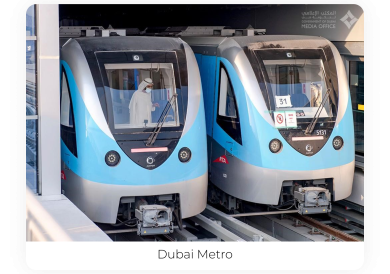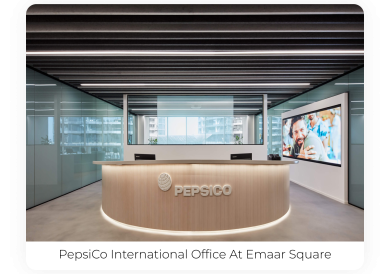Trusted By The Best
Transforming your ideas into practical solutions, Glass World Industries provides prompt service and quality products to Commercial Houses, Luxury hotels, Corporate and Residential Sectors.


















Experience Convenience and Style with our Automatic Doors
In today’s world, where everything is fast-paced and digital, automatic doors have become a necessity. From shopping malls to hospitals, these doors are ubiquitous. They offer convenience and accessibility, making them an integral part of modern-day architecture. Let’s explore the history, features, benefits, and applications of automatic doors.
Experience Convenience and Style with our Automatic Doors
In today’s world, where everything is fast-paced and digital, automatic doors have become a necessity. From shopping malls to hospitals, these doors are ubiquitous. They offer convenience and accessibility, making them an integral part of modern-day architecture. Let’s explore the history, features, benefits, and applications of automatic doors.
The concept of automatic doors dates back to ancient Greece, where they used the idea of a slave to open the door. However, the first-ever automatic door was invented in the mid-20th century. In 1954, Dee Horton and Lew Hewitt developed the first automatic door using a mat switch. Later, in the 1960s, the first sensor-based automatic door was developed. Over the years, these doors have evolved, and today they are an essential part of modern architecture.
Sliding Doors
These are the most popular type of automatic doors. They slide open and closed, making them
ideal for areas with limited space.
Swing Doors
These doors swing open and closed, making them ideal for areas with more space. They are
commonly used in hospitals and other healthcare facilities.
Revolving Doors
These doors are designed to reduce the amount of air that enters or exits a building. They are
commonly used in commercial buildings and hotels.
Automatic doors come with several features that make them ideal for various applications. Some
of the essential features include:
Safety Sensors
These sensors detect when someone is in the path of the door, preventing accidents.
Emergency Breakaway
In case of an emergency, the door can breakaway, allowing people to exit quickly.
Remote Control
Some automatic doors come with remote control, making it easy to operate the door from a
distance.
Low Energy Consumption
Automatic doors are designed to use minimal energy, making them energy-efficient.
Automatic doors offer several benefits, including:
Accessibility
These doors are designed to be accessible, making it easy for people with disabilities to move
around.
Convenience
Automatic doors offer convenience, especially in high traffic areas.
Energy-Efficient
Automatic doors are designed to use minimal energy, reducing energy costs.
Security
Automatic doors offer improved security, as they can be programmed to only allow authorized
personnel to enter.
Automatic doors have numerous applications in various industries, including:
Automatic Doors in Commercial Buildings
Automatic doors are commonly used in commercial buildings such as banks, supermarkets, and
shopping malls. They offer convenience and accessibility, making them ideal for high-traffic
areas where people need to move in and out quickly.
Automatic Doors in Hospitals
Automatic doors are widely used in hospitals and healthcare facilities. They allow patients and
staff to move around quickly and easily, especially in emergency situations.
Automatic Doors in Retail Stores
Retail stores use automatic doors to provide customers with easy access to their stores. These
doors offer convenience, especially for customers carrying shopping bags or pushing a cart.
Automatic Doors in Airports
Airports use automatic doors to provide easy access to passengers moving in and out of the
airport. These doors also offer increased security by allowing authorized personnel only to
access restricted areas.
Automatic Doors in Hotels
Hotels use automatic doors to provide guests with convenience and ease of access. These doors
also offer added security by restricting access to only authorized personnel.
Automatic Doors in Residential Buildings
Residential buildings such as apartments and condominiums use automatic doors to provide
residents with convenience and accessibility. These doors also offer added security by allowing
only authorized individuals to enter.
Automatic Doors in Public Transport
Public transport systems such as buses and trains use automatic doors to provide quick and easy
access for passengers. These doors also offer improved safety by preventing passengers from
falling out of the vehicle.
Automatic Doors in Museums
Museums use automatic doors to provide easy access for visitors. These doors also help maintain
a controlled environment, protecting the exhibits from outdoor elements.
Automatic entrance solutions have evolved to become a fundamental component of modern-day architecture. They offer convenience, accessibility, and improved security, making them an ideal choice for various industries. With different types and features available, automatic doors can be customized to meet specific needs. As technology continues to advance, we can expect to see more innovative features and applications for automatic doors in the future.
Transforming your ideas into practical solutions, Glass World Industries provides prompt service and quality products to Commercial Houses, Luxury hotels, Corporate and Residential Sectors.



















































Tell us about your project or request. Our team is here to help and would
love to hear from you.
Showroom: Near Al Sherawi – Ras Al Khor Industrial Area – Ras Al Khor Industrial Area 2 – Dubai – UAE
Showroom: Office Number 12 – Ras Al Khor Industrial Area 1 – Dubai – UAE

© Glassworld. All rights reserved.
WhatsApp us